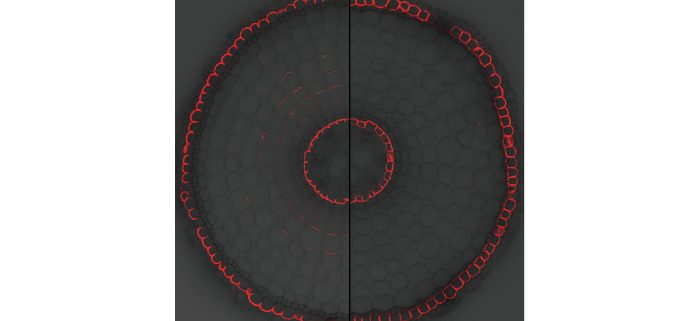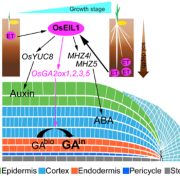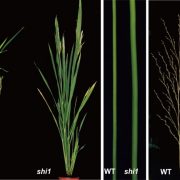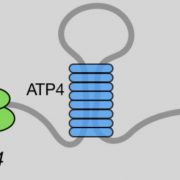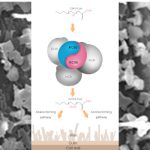Residues required for polar localization of rice Si transporter
Konishi et al. explore the mechanism underlying the polar localization of a silicon transporter.
By Noriyuki Konishi, Namiki Mitani-Ueno, Naoki Yamaji and Jian Feng Ma
Institute of Plant Science and Resources, Okayama University, Chuo 2-20-1, Kurashiki, 710-0046 Japan
Background: Silicon (Si) is a beneficial element for plants. Rice (Oryza sativa) can accumulate Si in shoots up to 10% of dry weight; this accumulation helps alleviate various stresses and is essential for stable and high production of rice. The high Si accumulation in rice is achieved by the cooperation of two Si transporters, LOW SILICON 1 and 2 (OsLsi1 and OsLsi2) expressed in the roots. OsLsi1, a channel-type transporter, is present in the plasma membrane of the root exodermis and endodermis and localizes to the outer side of the cell toward the soil (distally localized). OsLsi2, an efflux type transporter, is oppositely localized at the inner side (proximally localized) of the same cells. OsLsi1 and OsLsi2 form an efficient pathway for Si uptake in rice roots.
Question: What is the mechanism underlying the polar localization of these transporters? How important is the polar localization in efficient Si uptake?
Findings: With deletion and site-directed mutation approaches, we identified the critical amino acid residues required for the polar localization of OsLsi1. They are Ile18, Ile285, and positively charged residues from the N- and C-terminal cytosolic regions of OsLsi1. Interestingly, phosphorylation, ubiquitination, and clathrin-mediated endocytosis are not involved in the polar localization. Furthermore, comparing Si uptake between plants carrying polar or non-polar OsLsi1 variants showed that polar localization of OsLsi1 plays a significant role in efficient Si uptake.
Next steps: The factors that interact with OsLsi1 for its polar localization remain to be determined. Other mechanisms involved in the polar localization of mineral element transporters also need to be investigated, especially in crops such as rice.
Reference:
Noriyuki Konishi, Namiki Mitani-Ueno, Naoki Yamaji and Jian Feng Ma. (2023). Polar localization of a rice silicon transporter requires isoleucine at both C- and N-termini as well as positively charged residues. https://doi.org/10.1093/plcell/koad073


